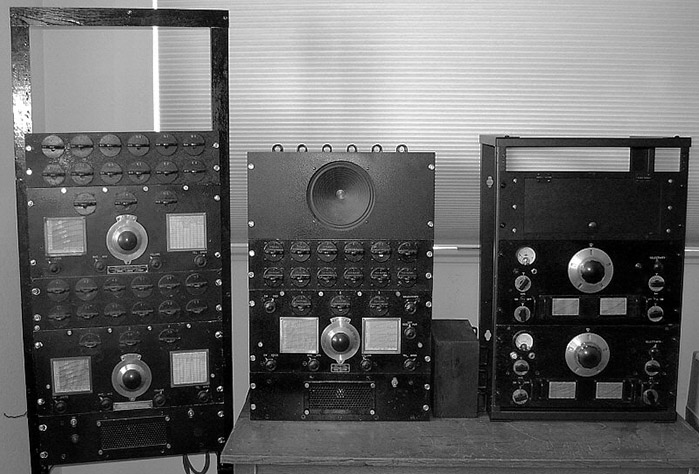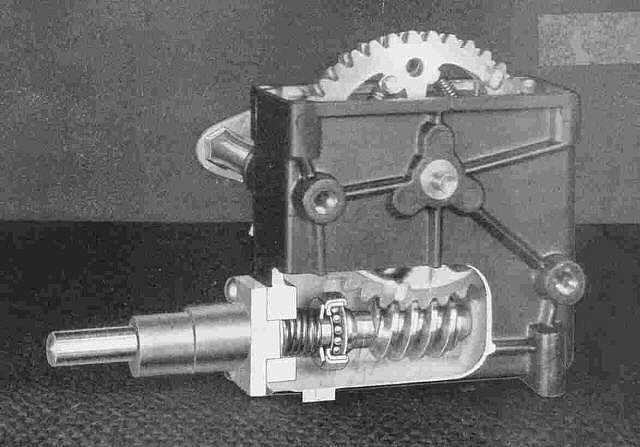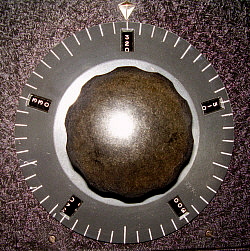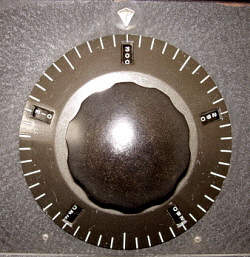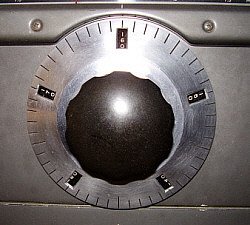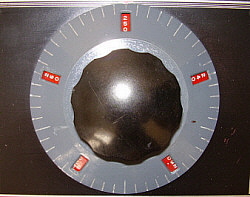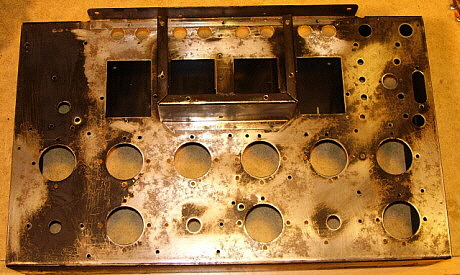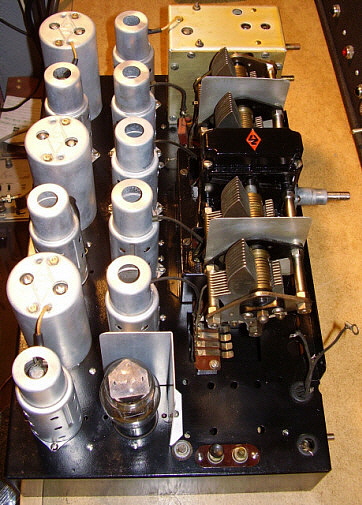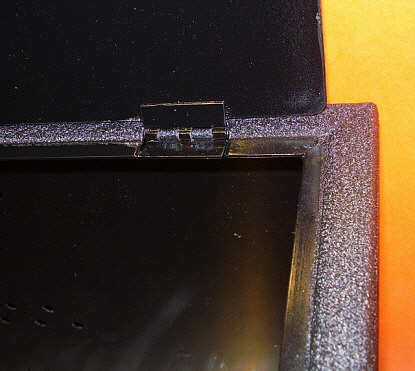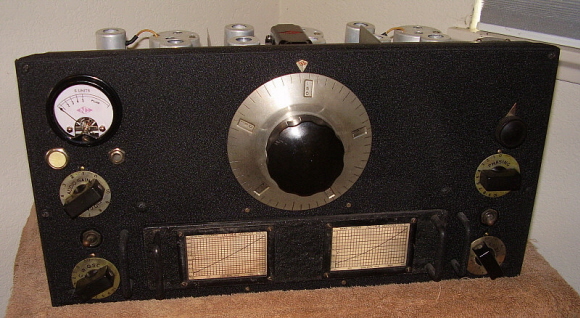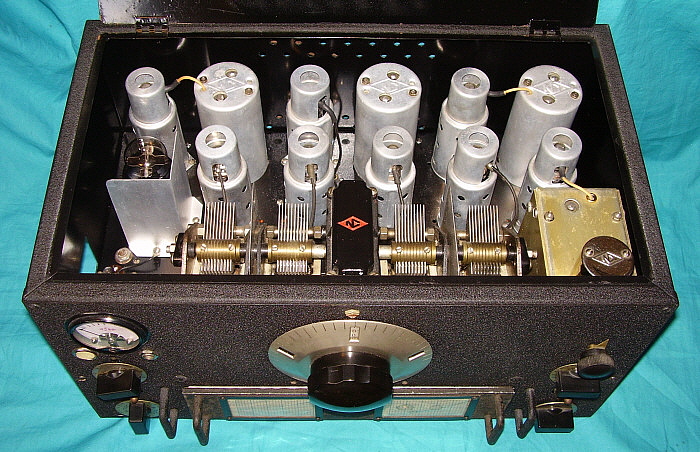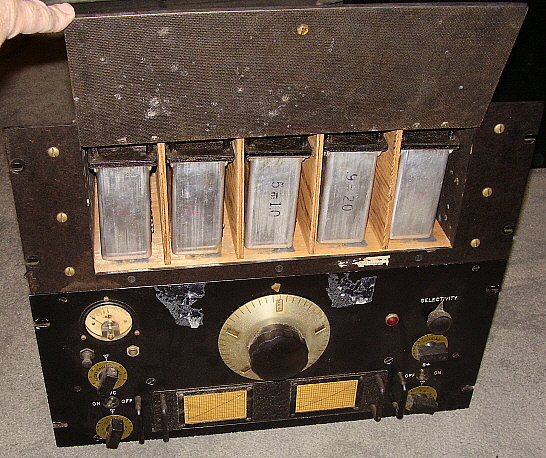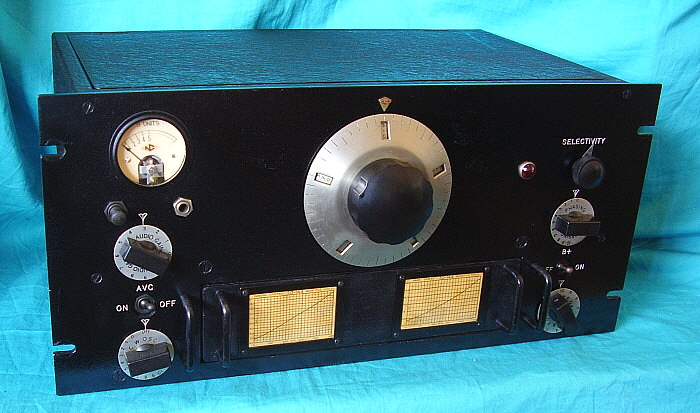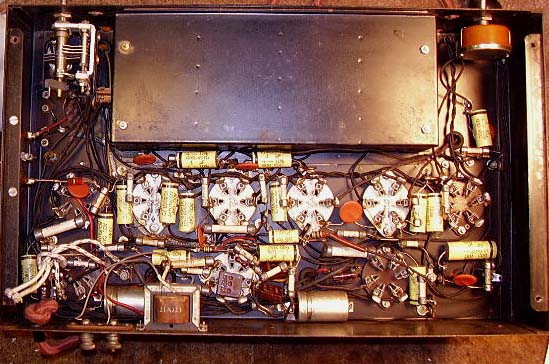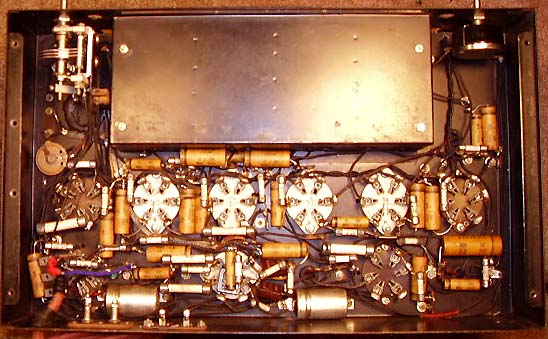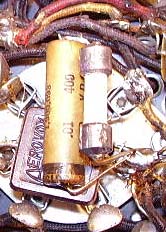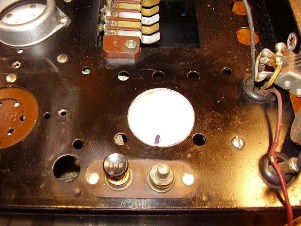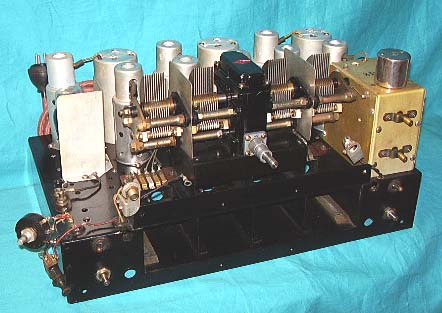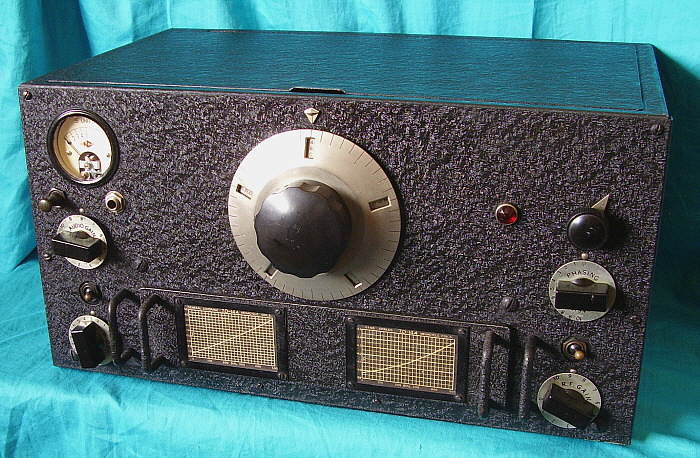| Power
Cables for the HRO - If your HRO doesn't have its
original power cable, examine the one installed carefully. The amount of
current required to operate the tube heaters will cause a significant
voltage drop unless the proper gauge wire is used in the cable. The
2.5vac tube heaters draw a total of 9.55 AMPS, or about 23 watts! Also,
there is a center tap resistor to eliminate hum that is also across the
tube heater line. The 2.5vac HRO cable should have 10 gauge wire in the
cable for the tube heaters. All reproduction brown cloth covered cables
(for battery radios) are inadequate due to the small gauge wire used in
the cables, (there are two types of repro cables, one has six wires and
one has eight wires.) Even connecting two or three wires in parallel
will not lower the resistance enough, resulting in too much IR
drop for proper heater voltage (along with heating up the wires in the
cable.)
The first option is to find another HRO power cable by salvaging one
from a derelict HRO. It requires finding a "parts set" and that is
becoming more and more difficult as almost all HRO receivers are
becoming desirable and expensive,...even when they're "junkers."
Another solution is to search for an authentic vintage battery radio
cable of sufficient length that has heavy gauge wires for the A battery
connection. Most of the Atwater Kent battery sets from 1925 and 1926
have two ten gauge wires for the A battery and then several small gauge
wires for the B and C battery connections. If one can be salvaged from a
derelict A-K radio, leave two small gauge wires for B+ and B- and then
cut the remaining small gauge wires close to the braid. The cable will
have two 10 gauge wires and two ~ 18 gauge wires. When installed, it
will look very authentic.
The other option is to build the power cable using two 10 gauge wires
for the heaters and two 18 gauge wires for the B+ and B-(chassis.)
The 6.3vac HRO Seniors are a different matter as they only draw 3.1
amps at 6.3vac for the tube heaters. By connecting two or three of the
wires in parallel in the reproduction cables, adequate current carrying
ability will result and the IR drop will be minimal. Vintage
battery radio cables will also work fine with the 6.3vac HRO
receivers. >>> |
>>> The National power supplies do have an increased voltage for
the heaters at the transformer. Usually about 25% increase to compensate
for the IR drop across the power cable but this was designed to
compensate for cables having large diameter heater wires. The best test
is to check the voltages with the HRO operating on the intended power
supply and measure the heater voltage across the hum elimination
resistor. Heaters should be within 5 - 10% of the specified voltage.
With low heater voltage (>20% drop,) the HRO seems to work okay but
you'll notice a general lack of sensitivity requiring the RF Gain to be
advanced more than usual. Also, check B+ at the tie point where the
cable connects. With low B+, the HRO also might seem to work okay on the
lower bands but the S-meter will not work correctly and the RF Gain will
have to be near maximum for CW reception. B+ should be 230vdc at about
70ma. In actual measurements the B+ will vary depending on if the HRO is
receiving AM or CW signals, how loud the set is playing, etc. - it is
normal for the B+ to vary from 220vdc up to about 245vdc depending on
the load. National stated that the HRO would work on as little as 135vdc
B+, but they did add, "at some sacrifice in performance."
Usually, the B+ IR drop is never a problem because the current
draw is so low. Cable
Connections - The schematics were always vague about the
plug connections and the wire colors. The cable used a 10 gauge wire,
colored red for FIL AC connection to pin 1 of the plug. The cable used
an 18 gauge wire, colored blue for B+ connection to pin 2 of the plug.
The cable used an 18 gauge wire, colored either green on early cables or
yellow on later cables for B- /Chassis connection to pin 3 of the plug.
The cable used a 10 gauge wire, colored black for FIL AC connection to
pin 4 of the plug.
Inside the chassis, the 10 gauge, red wire connects to pin 1 of the
BFO tube socket. The 10 gauge, black wire connects to pin 6 of the BFO
tube socket. Also, between pins 1 and 6 of the BFO tube socket is
connected the wire wound hum reducing resistor. The 18 gauge, blue wire
connects to the same tie strip (but not the same terminal) that also
provides a ground connection for C28. The 18 gauge, green (or yellow)
wire is connected to a chassis ground lug that's mounted at the same tie
strip.
Early cables had the B- wire colored green. Later cables had the B-
wire colored yellow. |
